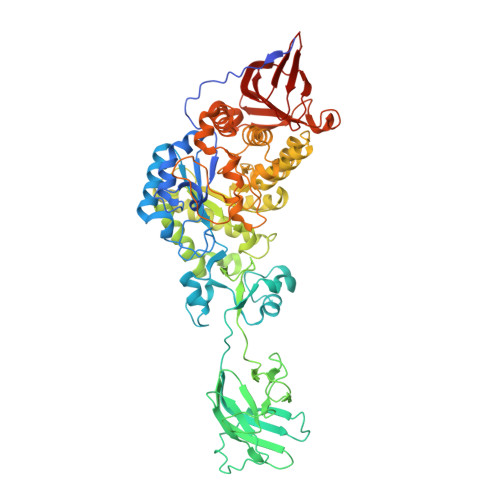Structural basis for the flexible recognition of alpha-glucan substrates by Bacteroides thetaiotaomicron SusG.
Arnal, G., Cockburn, D.W., Brumer, H., Koropatkin, N.M.(2018) Protein Sci 27: 1093-1101
- PubMed: 29603462
- DOI: https://doi.org/10.1002/pro.3410
- Primary Citation of Related Structures:
6BS6 - PubMed Abstract:
Bacteria that reside in the mammalian intestinal tract efficiently hydrolyze dietary carbohydrates, including starch, that escape digestion in the small intestine. Starch is an abundant dietary carbohydrate comprised of ¦Á1,4 and ¦Á1,6 linked glucose, yet mammalian intestinal glucoamylases cannot effectively hydrolyze starch that has frequent ¦Á1,6 branching as these structures hinder recognition and processing by ¦Á1,4-specific amylases. Here we present the structure of the cell surface amylase SusG from Bacteroides thetaiotaomicron complexed with a mixed linkage amylosaccharide generated from transglycosylation during crystallization. Although SusG is specific for ¦Á1,4 glucosidic bonds, binding of this new oligosaccharide at the active site demonstrates that SusG can accommodate ¦Á1,6 branch points at subsite -3 to -2, and also at subsite+1 adjacent to the site of hydrolysis, explaining how this enzyme may be able to process a wide range of limit dextrins in the intestinal environment. These data suggest that B. thetaiotaomicron and related organisms may have a selective advantage for amylosaccharide scavenging in the gut.
Organizational Affiliation:
Michael Smith Laboratories, University of British Columbia, 2185 East Mall, Vancouver, British Columbia, V6T 1Z4, Canada.


























